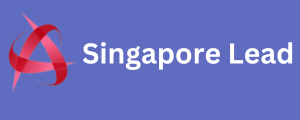CPCs are a key metric for calculating the profitability of your Amazon Ads strategy. However, you should be careful about using CPCs as a KPI for campaign optimisation because you run the risk of limiting performance (and profit) by holding back on your bids when opportunities emerge.
That said, if certain campaigns or keywords
Have unreasonably high CPCs, it’s perfectly justifiable to take action.
One option is to pause the gambling database campaigns/keywords in questions to stop any further budget being used on them. However, you can actively lower CPCs by taking the following steps:
- Schedule ads to show at the most effective times with the aim of increasing conversions and reducing CPCs.
- Rethink your keywords: Optimise your keyword lists to increase relevance and target stronger purchase intents.
- Optimise your Quality Score: This can significantly reduce the amount you need to pay to win auctions.
- Test ad positions: Don’t assume the highest ad position always wins the sale.
- Optimise your bids: Experiment with lower maximum bids to find the right balance between performance and CPCs.
If you find Amazon CPCs are too high on campaigns using automated bidding strategies, there’s a good chance you’ll be able to improve your numbers by manually optimizing campaigns – although, it can take a lot of work.
4. Optimising campaigns based on Advertising Cost of Sale (ACoS)
Advertising Cost of Sale (ACoS) describes the the article is for subscribers sources ratio of advertising costs to revenue from advertising. So, for example, if you have an ACoS of 18%, you’re spending £18 to generate £100 from your Amazon advertising campaigns.
ACoS is calculated using the following formula:
ACoS = Advertising cost / Attributed sales
One of the great things about advertising on Amazon is that its closed infrastructure means you can attribute every sale with ease. Likewise, it’s easier to consider all of your advertising costs with fewer external variables, such as landing page design, losing time optimisation and other expenses that need to be considered with inbound advertising strategies like Google Ads.
From an optimisation point of view, ACoS is valuable because it allows you to measure the relationship between spend and revenue. So you can increase bids and see if there’s a comparative increase in sales to find the ideal balance of spend vs revenue.
In the last section, we warned against using CPCs as a KPI for optimising ad spend because you risk limiting performance. But, by using ACoS as your key performance indicator, you can optimise CPCs while keeping track of sales and revenue vs cost, allowing you to see where lower CPCs might be limiting performance and instances where higher CPCs are actually more profitable.
5. Optimising campaigns based on conversion rate
Optimising conversion rates in Amazon b2b reviews can be tricky because you have fewer opportunities to optimise performance and differentiate your offer compared to channels like Google Ads and Facebook Ads.
The good news is, Amazon boasts some of the best conversion rates in the business – the best, according to the Feedvisor study we linked to earlier.
That said, if your impressions and clicks aren’t generating enough conversions, there are some key steps you can follow:
- Optimise your product pages
- Optimise your product titles
- Focus on higher-intent keywords
- Analyse your competitors’ ads and product pages
- Keep your prices competitive
- Improve your delivery service
- Ensure your products are eligible for Amazon Prime
- Improve your review scores
By following these eight steps, you should improve the overall performance of your campaigns across all five of the KPIs we’ve looked at in this section but, ultimately, it all comes down to making sure users buy from you and not one of your competitors.
